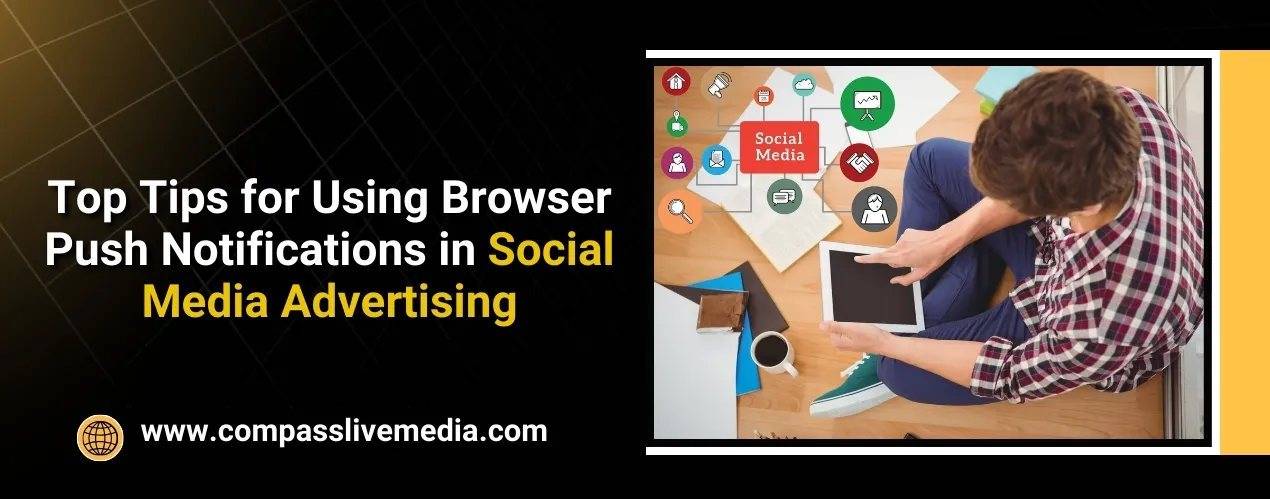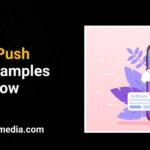Introduction
Browser push notifications are among the most effective tools widely used. The unlimited speed of the digital marketing platform to improve advertising on social media benefits. These notifications create a direct and real-time means through. Which brands can communicate with their target audience? When they are not interacting with the brands’ social media pages. Here, push notifications can help businesses promote engagement and the click-through rates that innovate the conversions. In this guide, you will learn the main issues related to the application of web push notifications in social media advertising and recommendations on whether it is worth doing this at the moment.
Define push notifications
It is displayed as messages, which can be alerts or banners, that appear on a user’s device regardless of his/her active visitation to the concerned web application or mobile application. These notifications are messages that are received from websites or applications that aim at alerting. A user with a message or promoting a specific product or event. Compared to a normal email that can be missed or ignored for a long time. Push notifications are immediate and explicit, which makes them very effective in grabbing the user’s attention at that very moment. Their impact revolves around the fact that they are able to bring short and clear information to the user’s screen.
Define social media advertising
Social media advertising can be defined as the act of placing ads on social media platforms in order to create awareness of products, services, or brand messages to a selected market. This means of advertising functions with a large base of users and numerous opportunities with the help of platforms such as Facebook, Instagram, Twitter, LinkedIn, and others. As the paid posts that show up in the users’ feed, stories, or website sidebars. Businesses are able to target the right demographics, the right interests, and the right behaviours. The basic objectives of social media advertising include creating awareness, traffic, and lead generation or sales. At the same time, fully exploits the interactive social media platforms and influencer network.
Top 5 Benefits of Push Notifications
- Immediate Engagement: Immediately update the users on new events or sales promotions, for example.
- High Visibility: Notifications are shown on the user’s screen and thus are easily viewed, unlike messages that may be buried in the user’s mailbox.
- Personalization: Adapt the messages depending on the users’ actions and their likes and dislikes.
- Cost-effective: The opportunity to achieve higher results in comparison with other forms of advertising at twice the lower price.
- Enhanced User Retention: Update users frequently to keep them interested, hence lowering the loss rate.
Types of Push Notifications
- Transactional Notifications: Remind users of the transactions that they have made or are to be made. Like purchase confirmations or notifications that their products are on the way.
- Promotional Notifications: Focus on the products that have good discounts or some sort of sale.
- Alert Notifications: Share useful news headlines or remind the users about important events.
- Geolocation Notifications: Promotional messages that can be sent depending on the geographical location of the user.
- Rich Push Notifications: Use pictures, movies, or any other media part so that the notification should look interesting.
How Push Notifications Work?
Push notifications are delivered from a server to a user’s device via a web browser or an application installed on the device. Under this context, if a user is visiting a website or has installed an app, he or she is permitted to accept to receive a notification. After subscription, the server can immediately deliver messages to the device the user is using, even if he is not visiting the site or using the app. These notifications appear on the user’s screen in real time and call for an instant response. The effectiveness of push notifications depends on their appropriateness in reaching. The user in a timely manner with a message that makes the user take certain actions. Be it an IR website hosting a visit or purchase of a product, or even receiving an informative or alert message.
Push Notification Design
In the message design of the push notifications, it is important to have messages that are not only cutesy but short and straightforward, which leads to the next step. The design should capture the reader’s attention, offer very brief message content, and have a call to action (CTA). Notifications should not be filled up with extra appearances like icons, logos, or images, though they can make the notification more attractive. One other thing to consider is that the message should be fairly plain and visible on the user’s interface. Also, the frequency and timing of notifications should be well planned to ensure that the users are not put off by the numerous notifications they receive from the application.
Pros and Cons of Push Notifications
Pros:
- Instant Communication: It is real-time communication, which leads to the immediate response to the sent message.
- High Engagement Rates: As for the other channels of communication, notifications have higher open rates when compared to them.
- Personalization Options: It can be made with a specific behaviour and profile stored in the system known to the users.
- Cost-effective: A lot of work that provides a high return on investment while utilizing minimum costs.
- Cross-Platform Reach: This can be passed from one device or browser to another.
- Improves Retention: This is very interactive, especially with the frequently notifying users of the latest information.
Cons:
- User Fatigue: Specifically, overuse of mobility services can cause users irritation and make them decide to opt out of such a service.
- Limited Message Length: The communication that is comprised of short messages may not entail comprehensible details.
- Potential for Ad Block: Some users can turn off notifications to lessen the coverage of the posts; hence, its reach is limited.
- Dependence on Opt-In: Users have to subscribe to the notifications in which the possible audience is restricted.
- Timing Sensitivity: Notifications, nevertheless, should be well timed in order not to disturb or be ignored by the customers.
- Privacy Concerns: This could be attributed to the fact that sensitive data necessary for sending personalized notifications could be a concern to the users.
Conclusion
Browser push notifications, when applied, can definitely improve the effectiveness of the benefits of social media ads. It’s an easy and fast method of advertising to the users, generating traffic and therefore increasing sales. But they, like any ordinary marketing technique, are not guaranteed to work regardless of how they are designed, when they are used, or how frequently they are sent. Consequently, marketers can decide to incorporate push notifications into a wider use of social media, and advertising on social media. Thus, they can gain greater engagement levels, improved user retention, and ultimately, more efficient campaigns.
FAQs
1. What is push notification strategy?
Push notification strategy is a concept that specifies what kind of notifications have to be displayed to the users of the concerned application or website within what time frame, how often it has to be done, to whom, and with what message.
2. What is a good CTR for push notifications?
According to data, the average click-through rate (CTR) of push notifications depends on the channel and industry and ranges between 1-7%, which depends on the type of application, type of notification, and message customization.
3. What are the challenges of push notifications?
Possible challenges of notifications include frequency of notifications, messages, wrong location of the notification, users’ expectations, poor quality of notifications, and handling multiple notifications, notification systems, devices, or laws.




